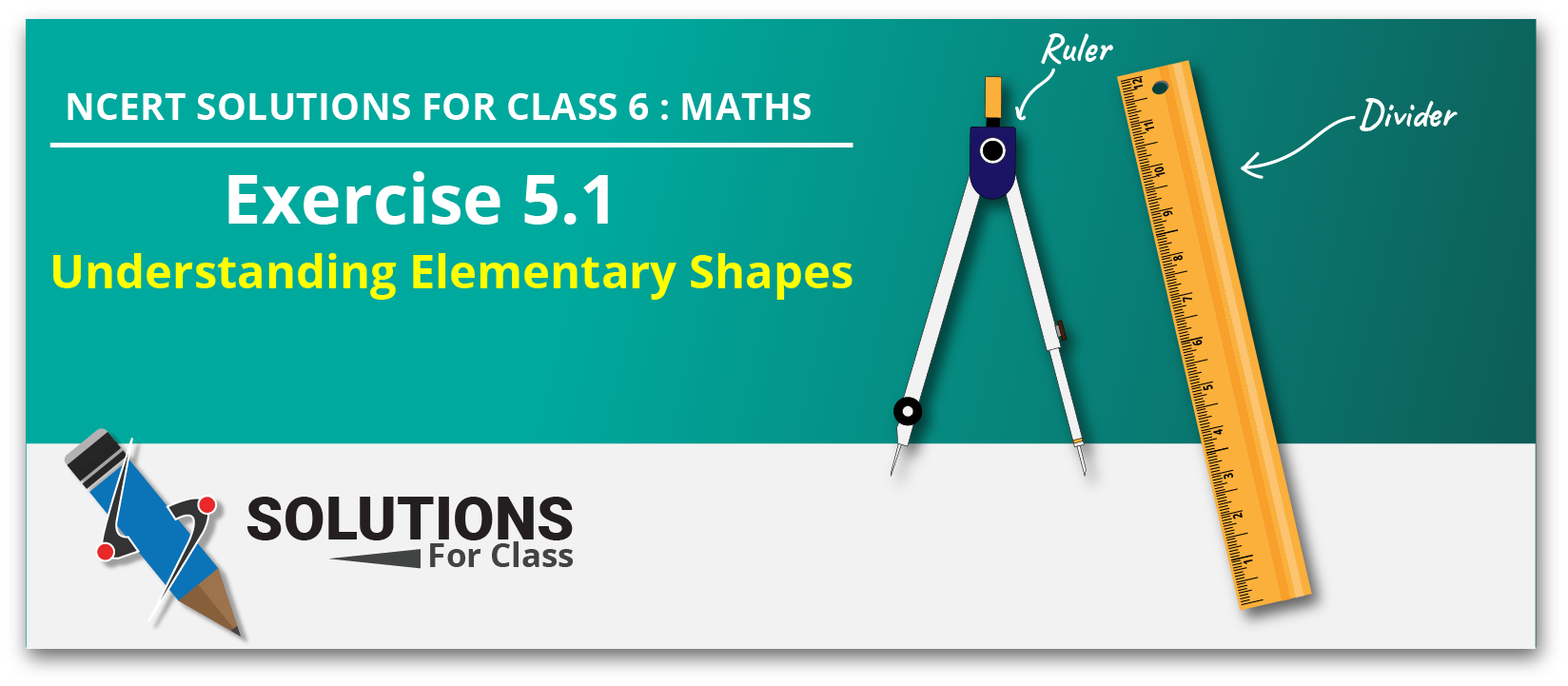
Table of Contents
ToggleNCERT Solutions for class 6, Maths chapter 5 has basic learning concepts of various shapes. This class 6 maths exercise 5.1 is about knowledge of line segments and basic requirements of making triangle.The questions in this exercise named as Understanding Elementary Shapes, Exercise 5.1 given below.
Understanding Elementary Shapes, Exercise 5.1
Q.1. What is the disadvantage in comparing line segments by mere observation?
Ans: It causes occurrence of errors because by mere observation , we can’t compare the line segments with slight difference in their length. We can’t say which line segment is of greater length. Hence, the chances of errors are more.
Q.2. Why is it better to use a divider than a ruler, while measuring the length of a line segment?
Ans: Measurement by a ruler may be not accurate because of the thickness of the ruler. Hence, it is better to use a divider than a ruler, while measuring the length of a line segment.
Q.3. Draw any line segment, say ![]() . Take any point C lying in between A and B. Measure the lengths of AB, BC and AC. Is AB = AC + CB ? [Note : If A,B,C are any three points on a line such that AC + CB = AB, then we can be sure that C lies between A and B.]
. Take any point C lying in between A and B. Measure the lengths of AB, BC and AC. Is AB = AC + CB ? [Note : If A,B,C are any three points on a line such that AC + CB = AB, then we can be sure that C lies between A and B.]
Ans: Yes, the length of line segment AB is equal to sum of line segment AC and CB.
Therefore, for every situation in which point C is lying in between A and B we may say that
AB = AC + CB
For example:

AB = 8 cm and C is a point between A and B such that AC = 5 cm and CB = 3 cm.
Hence, AC + CB = (5+3) cm = 8 cm
Since, AB = 8 cm
∴ AB = AC + CB is verified.
Q.4.If A,B,C are three points on a line such that AB = 5 cm, BC = 3 cm and AC = 8 cm, which one of them lies between the other two?
Ans: Given, AB = 5 cm, BC = 3 cm and AC = 8 cm
![]() is the longest line segment, thus B is the point between A and C.
is the longest line segment, thus B is the point between A and C.
Therefore, AC = AB + BC
Thus, point B lies between A and C.
Q.5. Verify, whether D is the mid point of $\overline {AG} $ .

Ans: Here, AD = 3 units and DG = 3 units
∴ AD = DG
Hence, D is the midpoint of ![]() .
.
Q.6. If B is the mid point of AC and C is the mid point of , where A,B,C,D lie on a straight line, say why AB = CD?
Ans:
![]()
Given
B is the midpoint of ![]() . Hence, AB = BC ……………………. (i)
. Hence, AB = BC ……………………. (i)
And C is the midpoint of ![]() . Hence, BC = CD ……………….(ii)
. Hence, BC = CD ……………….(ii)
From (1) and (2), we get
AB = CD (Hence Verified)
Q.7. Draw five triangles and measure their sides. Check in each case, if the sum of the lengths of any two sides is always less than the third side.
Ans: (a) In triangle ABC

AB= 3 cm , BC = 4 cm and AC = 5 cm
AB + BC = (3 + 4) cm = 7 cm
As, 7 > 5
∴ AB + BC > AC
Hence, the sum of any two sides of a triangle is greater than the third side.
(b) In triangle PQR

PQ = 8 cm, QR = 5 cm and PR = 10 cm
PQ + QR = (8 + 5) cm = 13 cm
As 13 > 10
∴ PQ + QR > PR
Hence, the sum of any two sides of a triangle is greater than the third side.
(c) In triangle KLM

KL = 8 cm, LM = 8 cm and KM = 8 cm
KL + LM = (8+8) cm = 16 cm
As 16 cm > 8 cm
∴ KL + LM > KM
Hence, the sum of any two sides of a triangle is greater than the third side.
(d) In triangle ABC:

AB= 3.5 cm , BC = 5.5 cm and AC = 8.5 cm
AB + BC = (3.5 + 5.5) cm = 9 cm
As, 9 > 8.5
∴ AB + BC > AC
Hence, the sum of any two sides of a triangle is greater than the third side.(e) In triangle PQR

PQ = 2.5 cm, QR = 3.5 cm and PR = 4.5 cm
PQ + QR = (2.5 + 3.5) cm = 6 cm
As 6 > 4.5
∴ PQ + QR > PR
Hence, the sum of any two sides of a triangle is greater than the third side.
Therefore, we conclude that the sum of any two sides of a triangle is always greater than the third side.
Chapter 5 : Understanding Elementary Shapes
Understanding Elementary Shapes, Exercise 5.1
Understanding Elementary Shapes, Exercise 5.2
Understanding Elementary Shapes, Exercise 5.3
Understanding Elementary Shapes, Exercise 5.4
Understanding Elementary Shapes, Exercise 5.5
Understanding Elementary Shapes, Exercise 5.6
Understanding Elementary Shapes, Exercise 5.7

